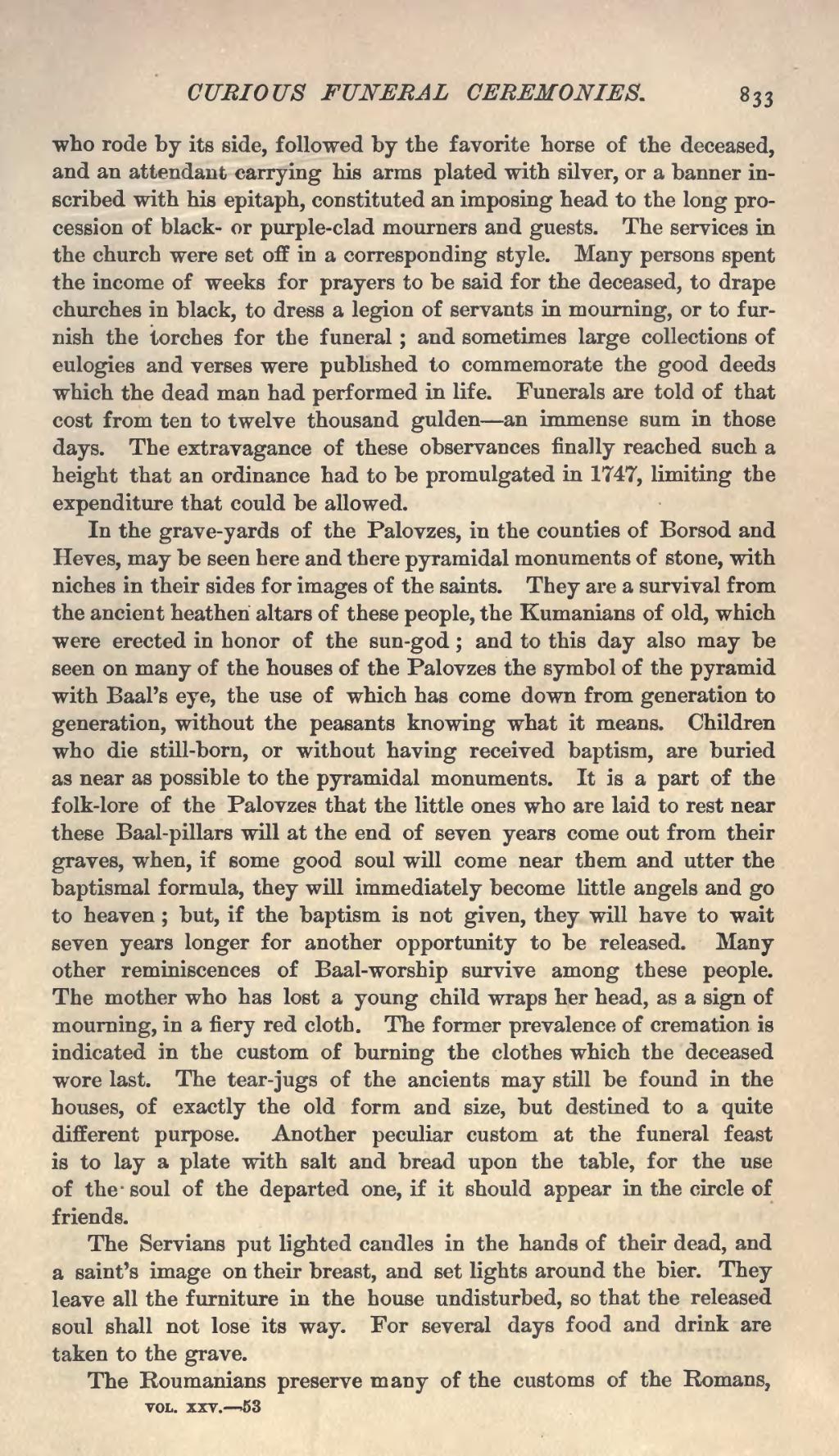who rode by its side, followed by the favorite horse of the deceased, and an attendant carrying his arms plated with silver, or a banner inscribed with his epitaph, constituted an imposing head to the long procession of black- or purple-clad mourners and guests. The services in the church were set off in a corresponding style. Many persons spent the income of weeks for prayers to be said for the deceased, to drape churches in black, to dress a legion of servants in mourning, or to furnish the torches for the funeral; and sometimes large collections of eulogies and verses were published to commemorate the good deeds which the dead man had performed in life. Funerals are told of that cost from ten to twelve thousand gulden—an immense sum in those days. The extravagance of these observances finally reached such a height that an ordinance had to be promulgated in 1747, limiting the expenditure that could be allowed.
In the grave-yards of the Palovzes, in the counties of Borsod and Heves, may be seen here and there pyramidal monuments of stone, with niches in their sides for images of the saints. They are a survival from the ancient heathen altars of these people, the Kumanians of old, which were erected in honor of the sun-god; and to this day also may be seen on many of the houses of the Palovzes the symbol of the pyramid with Baal's eye, the use of which has come down from generation to generation, without the peasants knowing what it means. Children who die still-born, or without having received baptism, are buried as near as possible to the pyramidal monuments. It is a part of the folk-lore of the Palovzes that the little ones who are laid to rest near these Baal-pillars will at the end of seven years come out from their graves, when, if some good soul will come near them and utter the baptismal formula, they will immediately become little angels and go to heaven; but, if the baptism is not given, they will have to wait seven years longer for another opportunity to be released. Many other reminiscences of Baal-worship survive among these people. The mother who has lost a young child wraps her head, as a sign of mourning, in a fiery red cloth. The former prevalence of cremation is indicated in the custom of burning the clothes which the deceased wore last. The tear-jugs of the ancients may still be found in the houses, of exactly the old form and size, but destined to a quite different purpose. Another peculiar custom at the funeral feast is to lay a plate with salt and bread upon the table, for the use of the soul of the departed one, if it should appear in the circle of friends.
The Servians put lighted candles in the hands of their dead, and a saint's image on their breast, and set lights around the bier. They leave all the furniture in the house undisturbed, so that the released soul shall not lose its way. For several days food and drink are taken to the grave.
The Roumanians preserve many of the customs of the Romans,
